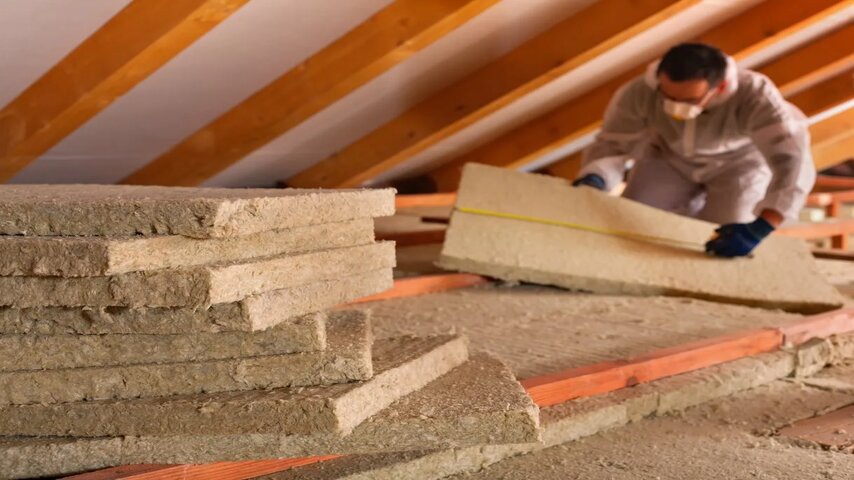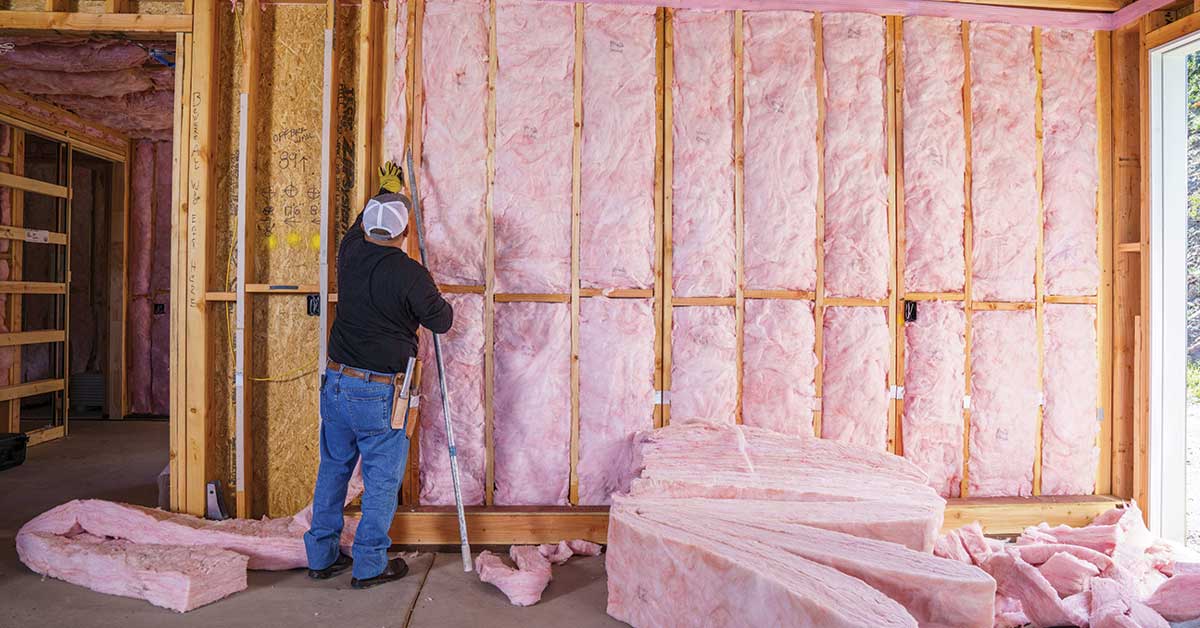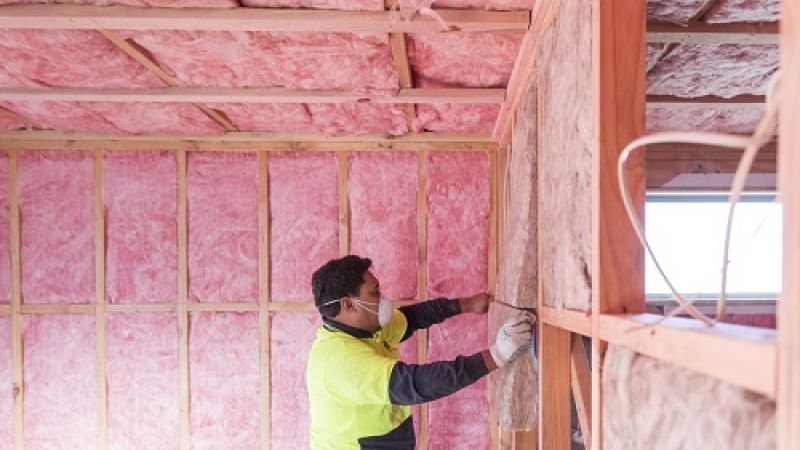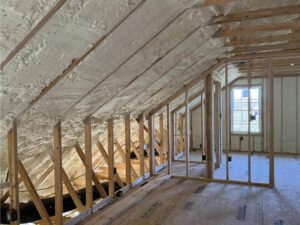Batt insulation performs best in standard-sized wall cavities, attics with regular joist spacing, and basement rim joists where consistent dimensions allow proper fitting. This traditional insulation excels in moderate climate zones (IECC Zones 3-5) and interior walls where sound dampening is desired, offering a balance of cost-efficiency and performance with R-values of R-13 to R-21 in walls and up to R-38 in attics. Batt insulation struggles in irregular spaces, extremely cold climates, and areas with high moisture exposure, where its effectiveness diminishes considerably.
This guide details the optimal applications for best batt insulation throughout your homes comparing performance across different areas and against alternative insulation types. We’ll explore installation considerations, climate suitability, and cost-effectiveness to help you determine whether batt insulation is the right choice for your specific needs.
Optimal Locations for Batt Insulation
Certain areas in your home naturally accommodate batt insulation better than others due to spatial characteristics and exposure conditions. Understanding these optimal applications helps maximize performance and value.
Performance by Home Area
| Home Area | Batt Suitability | Performance Factors | Installation Ease | Cost-Effectiveness |
|---|---|---|---|---|
| Exterior Walls | Excellent | Consistent cavity dimensions, protected from elements | High | Very High |
| Interior Walls | Excellent | Easy fit, sound dampening value | Very High | High |
| Attic Floors | Good to Excellent | Uncomplicated horizontal installation, vapor issues manageable | High | Very High |
| Cathedral Ceilings | Moderate | Requires proper ventilation, precision fitting | Moderate | Moderate |
| Basement Rim Joists | Good | Standard dimensions, requires vapor barrier | High | High |
| Basement Walls | Poor to Moderate | Moisture concerns, requires framing | Low | Low |
| Crawlspaces | Poor | High moisture environment, difficult access | Very Low | Very Low |
| Floors Over Unheated Spaces | Moderate | Gravity works against installation, needs support | Moderate | Moderate |
According to current market data, approximately 71% of new residential construction still uses batt insulation in exterior walls, making it the most widely used insulation service type despite newer alternatives.
Batt Insulation Technical Specifications
| Batt Material | R-Value Per Inch | Standard Thicknesses | Standard Widths | Moisture Resistance | Fire Rating | Common Applications |
|---|---|---|---|---|---|---|
| Fiberglass | 2.9-3.8 | 3.5″, 5.5″, 8″, 12″ | 15″, 16″, 23″, 24″ | Poor to Moderate | Class A | Walls, Attics |
| Mineral Wool | 3.0-3.3 | 3.5″, 5.5″, 7.25″ | 16″, 24″ | Good | Class A (Noncombustible) | Walls, Attics, Fire Barriers |
| Cotton | 3.0-3.7 | 3.5″, 5.5″ | 16″, 24″ | Moderate | Class A (with treatment) | Walls, Soundproofing |
| Sheep’s Wool | 3.5-3.8 | 3.5″, 5.5″ | 16″, 24″ | Excellent | Class B | Walls, Humid Areas |
Bonus Tip: When choosing batt width, always measure your actual joist spacing rather than assuming standard 16″ or 24″ spacing. Older homes often have irregular spacing that may require cutting standard batts to fit properly.
Climate Considerations and Performance
Batt insulation performs differently across climate zones, with its effectiveness varying based on temperature ranges and moisture conditions.
Climate Zone Suitability
| Climate Zone | Batt Performance | Recommended R-Value | Special Considerations | Alternative Recommendations |
|---|---|---|---|---|
| Zone 1-2 (Hot) | Moderate | R-13 to R-15 Walls | Moisture management crucial | Consider radiant barrier |
| Zone 3-4 (Mixed) | Good | R-15 to R-19 Walls | Best overall value zones for batts | Standard application works well |
| Zone 5-6 (Cold) | Moderate | R-19 to R-21 Walls | Air sealing critical for performance | Consider hybrid with foam board |
| Zone 7-8 (Very Cold) | Poor to Moderate | R-21+ Walls | Significant thermal bridging issues | Consider spray foam alternatives |
Seasonal Performance Factors
Batt insulation’s performance changes seasonally, especially in areas with extreme temperature swings or humidity variations. These factors affect long-term effectiveness and maintenance needs.
| Season | Performance Concerns | Maintenance Needs | Prevention Measures |
|---|---|---|---|
| Summer | Potential for moisture condensation in AC climates | Inspect for sagging | Ensure proper vapor barriers |
| Fall | Generally stable performance | Good time for assessment | Address any issues before winter |
| Winter | Cold air infiltration through gaps | Monitor for drafts | Combine with thorough air sealing |
| Spring | Potential for moisture issues from temperature changes | Check for winter damage | Ensure attic ventilation systems work properly |
Comparative Insulation Analysis
Understanding how batt insulation compares to alternatives helps determine whether it’s the right choice for specific applications in your home.
Insulation Type Comparison
| Insulation Type | Cost Per Square Foot | DIY Feasibility | R-Value Per Inch | Moisture Resistance | Air Sealing Properties | Best Applications |
|---|---|---|---|---|---|---|
| Fiberglass Batts | $0.65-$1.20 | High | 2.9-3.8 | Poor | Poor | Standard walls, Attics with proper sealing |
| Mineral Wool Batts | $1.10-$1.60 | High | 3.0-3.3 | Good | Poor | Fire barriers, Sound control |
| Blown Cellulose | $1.20-$2.20 | Moderate | 3.2-3.8 | Moderate | Good | Attics, Retrofit walls |
| Blown Fiberglass | $1.00-$1.90 | Moderate | 2.2-2.9 | Poor | Moderate | Attics, Hard-to-reach areas |
| Spray Foam (Open Cell) | $1.50-$2.80 | Low | 3.6-3.9 | Moderate | Excellent | Irregular spaces, Air sealing priority |
| Spray Foam (Closed Cell) | $2.00-$3.50 | Low | 6.0-7.0 | Excellent | Excellent | Moisture-prone areas, Maximum R-value needs |
| Rigid Foam Board | $0.90-$1.80 | Moderate | 3.8-6.8 | Good to Excellent | Good (with proper sealing) | Basement walls, Continuous insulation |
Recent industry surveys indicate homeowners installing batt insulation save an average of 45-60% on installation costs compared to spray foam alternatives, making it an economical choice for budget-conscious projects.
Installation Factors for Maximum Performance
Proper installation dramatically impacts batt insulation effectiveness. Several techniques and approaches can significantly improve performance.
Common Installation Mistakes and Solutions
| Installation Issue | Performance Impact | Solution | DIY Difficulty |
|---|---|---|---|
| Gaps Around Edges | Up to 25% R-value loss | Cut batts 1″ wider than cavity | Easy |
| Compressed Insulation | Up to 40% R-value loss | Use correct thickness for cavity depth | Easy |
| Gaps Around Obstacles | Up to 20% R-value loss | Split batts around wires and pipes | Moderate |
| Exposed Facing/Gaps | Air infiltration points | Use unfaced batts with separate air barrier | Moderate |
| Incomplete Coverage | Significant thermal bypasses | Ensure all cavities are filled | Easy |
| Improperly Cut Pieces | Voids and compressed areas | Measure each cavity individually | Easy |
Bonus Tip: For electrical boxes and other obstacles, cut an “X” shape slightly smaller than the obstacle in the batt, then pull the flaps through and trim excess. This creates a more complete seal than cutting a rectangle out of the batt.
Things to Consider Before Making a Decision
Several important factors should inform your choice of batt insulation for specific applications in your home.
Structural Considerations
Your home’s construction details significantly impact batt insulation performance. Newer homes with consistent framing and dedicated air barriers typically see better results than older homes with irregular construction or without proper air sealing.
Long-Term Value Assessment
While batt insulation offers lower upfront costs, considering long-term factors like durability, maintenance needs, and energy savings provides a more complete picture of value. In some applications, higher-cost alternatives may deliver better lifetime returns.
Environmental and Health Factors
Different batt materials offer varying advantages for those with specific health or environmental concerns. Consider these factors when selecting insulation type:
| Batt Material | VOC Emissions | Recycled Content Potential | Sustainability Rating | Allergen Concerns |
|---|---|---|---|---|
| Fiberglass | Very Low (formaldehyde-free available) | 20-30% typical | Moderate | Skin and respiratory irritant during installation |
| Mineral Wool | Very Low | 70-75% typical | Good | Less irritating than fiberglass |
| Cotton | None | 85-90% recycled denim | Excellent | Very low, good for sensitive individuals |
| Sheep’s Wool | None | Natural renewable resource | Excellent | Very low, naturally hypoallergenic |
Batt Insulation FAQ
How long does batt insulation typically last?
Properly installed batt insulation that remains dry can last 20-30 years before performance degradation becomes significant. Fiberglass and mineral wool batts generally maintain their R-value longer than cotton-based alternatives. However, any insulation exposed to moisture, pest activity, or compression will experience reduced lifespan and performance.
Can I install batt insulation over existing insulation?
You can install new batts over existing insulation in attics if the existing material is in good condition without compression, moisture damage, or pest infiltration. Never compress existing insulation with new batts as this reduces the R-value of both layers. For walls, existing insulation typically needs removal before installing new batts.
What’s the difference between faced and unfaced batts?
Faced batts include a vapor retarder (typically kraft paper or foil) attached to one side that helps manage moisture movement. These work well in exterior walls and as the first layer in attics. Unfaced batts contain no vapor retarder and work best for interior walls, as additional layers in attics, or when a separate vapor barrier strategy is used.
Is batt insulation effective for soundproofing?
Batt insulation provides moderate soundproofing benefits, reducing sound transmission by approximately 30-45% when properly installed in interior walls. Mineral wool batts offer superior acoustic performance compared to fiberglass, reducing sound transmission by an additional 5-10%. For maximum sound reduction, combine batts with resilient channels and acoustic sealant.
Can I mix batt insulation with other insulation types?
Combining batt insulation with other types often creates an effective strategy. Common successful combinations include batt insulation in wall cavities with continuous rigid foam sheathing on exterior walls, or batt insulation as a base layer in attics with blown insulation added on top. These combinations can address the limitations of batts while maintaining cost-effectiveness.
Make the Right Decision
Batt insulation offers an attractive balance of cost and performance when used in appropriate applications and installed correctly. Its greatest strengths emerge in standard wall cavities, accessible attic floors, and situations where budget constraints make other options prohibitive.
For optimal results, pair batt insulation with thorough air sealing, proper vapor management, and realistic expectations about its limitations. In many homes, a hybrid approach using batts in ideal locations and alternative insulation types in challenging areas delivers the best overall performance and value.
Evaluate your specific needs, climate conditions, installation capabilities, and budget constraints to determine where batt insulation makes the most sense in your home improvement plans.
Reviewer:
Ava Clark shared her input based on 6 years of working with spray foam insulation teams. Her focus on customer trust and communication helped shape key parts of this post.








